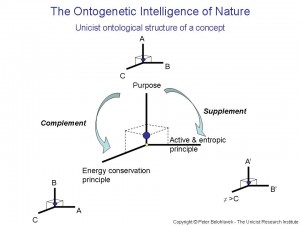The integration of the ontogenetic intelligence of nature, the anthropological invariables and human ontointelligence made the development of the ontogenetic maps possible.
 These ontogenetic maps are timeless meaning that they are valid as long as the function they represent exists.
These ontogenetic maps are timeless meaning that they are valid as long as the function they represent exists.
For example, the ontogenetic map of a lifeboat exists and remains unchanged as long as its function exists. Technologies change, cultural contexts are different but the ontogenetic map of the lifeboat remains the same.
Ontogenetic maps are cross-cultural because the integration of the ontogenetic intelligence of nature with the anthropological (cultural) invariables defines the nature of a function in synthetic language.
On the one hand, this makes the unicist ontological structures self-evident in any culture and, on the other hand, it makes the ontological algorithms, that define the ontogenetic maps, be perceived as logical because they follow the natural way something needs to be developed.
Peter Belohlavek
NOTE: The Unicist Research Institute was the pioneer in complexity science research and became the major research organization in the world in the field of human adaptive systems. More than 4,000 unicist ontological researches were developed since 1976 until July 2011 in the field of individual, institutional and social evolution. They included the development of the unicist ontogenetic maps (DNA) of institutions.